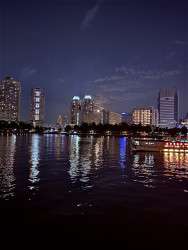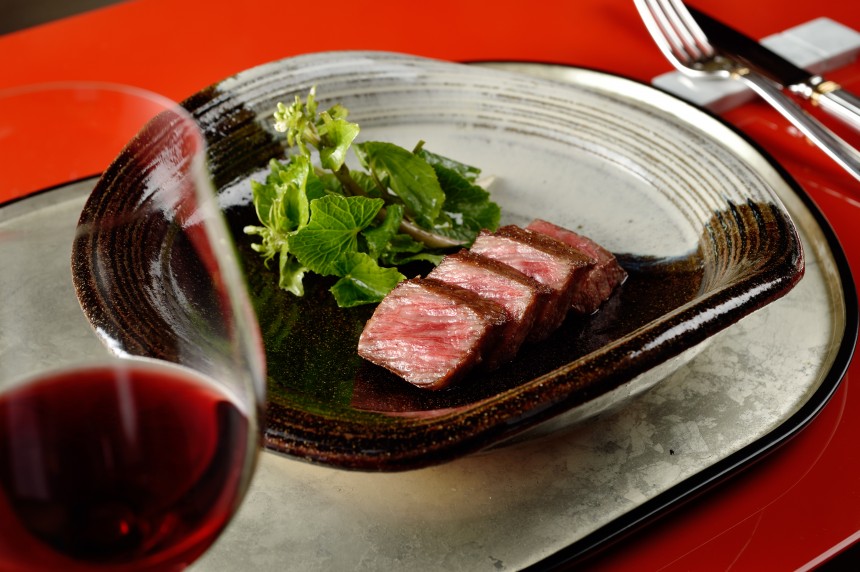
July 6, 2018
Roppongi Hills Restaurant Refresh
New food fare comes to the complex in celebration of its 15th anniversary
Roppongi Hills has attracted an estimated 600 million visitors over the last 15 years. April 25, 2018 marked the 15th anniversary of the area, and in recognition of this milestone, Roppongi Hills is making a significant push in 2018 to reinforce and refresh its position as the cultural heart of Tokyo. The developments encompass fashion, food, art, and community building activities, and come in the lead-up to the 2020 Olympic Games, for which Tokyo is expected to host an influx of international visitors. A fixture of these changes is a range of new restaurants (and restaurant revamps) in and around Roppongi Hills. The four locations described here represent the variety of new dining options available since spring.
Obicà Mozzarella Bar
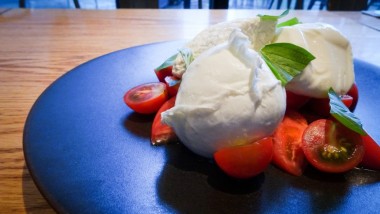
Obicà Mozzarella Bar moved to a new location in Roppongi Hills this year after 10 years in its previous location on Keyakizaka. It’s now located in the Hollywood Plaza area and features a glass wall overlooking the plaza, which includes roughly a half dozen outdoor tables. “The new location on Roppongi Dori attracts a wider range of customers, and the atmosphere is more casual,” explains Obicà manager and sommelier Taiki Nakagawa. “We offer seven different types of cheese, and receive shipments of mozzarella from Campania, Italy three times a week.” Obica specializes in Mozzarella di Bufala Campana, mozzarella made from water buffalo milk; the cheese has the Controlled Designation of Origin (DOC) status, a quality assurance marker granted by the Italian government. Obicà’s menu includes cheese tasting sets as samplers; choose between 40 g (1 – 2 people) and 80 g (2 – 3 people) portions for cheese, or order à la carte. The “standard” mozzarella is juicier and thicker than cow’s milk mozzarella and is the recommended first bite from the 2-mozzarella + ricotta tasting plate (¥4,300). From there, move to the buratta (straciatella, a creamy cheese curd, wrapped in a casing of mozzarella) for rich flavor and a decadent mouthfeel. End with a bite of the ricotta cheese, a melt-in-your mouth luxury with a hint of sweetness that suggests it could even be eaten for dessert. If venturing beyond the cheese menu to the pizzas, meats, and other items on offer, take note: the restaurant does not use onion or garlic so as not to distract from the flavors of the cheese. “We really hope that visitors to the restaurant have the chance to enjoy authentic mozzarella cheese here,” says Nakagawa.
Sobamae Yamato
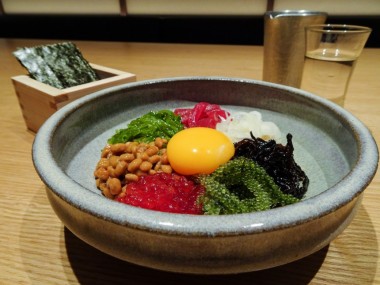
The not-too-casual not-too-expensive Sobamae Yamato opened its Roppongi location in spring of 2018 after 15 years in Yoyogi-Uehara. There, explains Mr. Watanabe, the manager, “people eat and drink together and finish their meals by enjoying soba. Here, however, while of course we still hope people do that, we also want to place our focus a little bit more on the dishes that come before the soba.” The location’s name, Sobamae (蕎麦, soba, and 前 [mae], before), is to be interpreted literally. Try Sobamae’s bakudan (bomb, ¥1,200), a colorful and texturally stimulating dish. The current seasonal variation is seafood focused, including vegetables (hijiki, umibudo) and fish (tuna, salmon roe) alongside natto (fermented soybeans). Topped with an egg, everything in the dish is meant to be mixed with a dash of soy sauce and rolled up in a small, toasted piece of nori. The result is an explosion of textures and a pleasant, umami-rich melding of flavors. Enjoy sake with this dish, and share with friends. To conclude the meal, try the soba; for summer, Sobamae recommends the tsuke soba (¥1,100); noodles are prepared separately from a dipping broth. “Even people who know their soba well might be surprised by this broth,” explains Watanabe. “It has an almost ramen-like taste to it.” Dip the freshly prepared soba noodles into the salty, onion-peppered broth for a hearty, sesame-tinged end to your meal. Add a squeeze of the provided lemon for a bit of acidity. The location is intended to be one where people can feel comfortable visiting alone or with friends; a space to enjoy not only the food itself, but the act of eating. “Roppongi Hills is a great location, certainly,” explains Watanabe. He adds his final thought with a smile: “We want people to love coming here.”
Roppongi Ukai-Tei
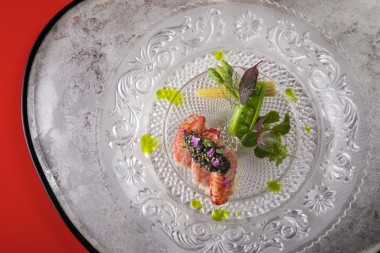
For a fine dining experience, consider the new offerings by Ukai Group, which operates restaurants across Japan and opened its first overseas location at the end of 2017 (in Taiwan). Ukai’s concept is to create locations that can “last for 100 years,” referring to each restaurant’s capacity to adapt and change to evolving preferences over time. “Roppongi is a vibrant, international business center. Looking to 2020, part of the decision to open restaurants here came from a desire to communicate Ukai’s vision and the evolution of cuisine in Tokyo,” explains an Ukai Group representative. At each restaurant, the utmost attention is paid to atmosphere, ingredient selection, and hospitality. The Roppongi location of Ukai-Tei provides a chef’s table teppanyaki experience; each seat has a private, intimate feel. The decor features use of crimson and gold, with the aim of creating a separate world — a space completely distinct from the everyday. Guests may choose from one of two course meals for dinner; the Tamura beef course (¥37,800/person) or the seasonal speciality & beef course (¥27,000/person). Cows are fattened and selected by Ukai to produce Ukai’s top-quality beef. The featured item on the seasonal menu for this summer is hairy crab with caviar. “The menu at Ukai-Tei-Roppongi differs from other locations,” explains the Ukai Group representative. “The head chefs at each restaurant structure their menus to fit the customers for each location. In Roppongi, we offer a course featuring not only steak, but other ways of enjoying Tamura beef; other dishes allow guests to enjoy the umami inherent in the meat as well.” A lunch course is also available (¥12,960/person). Ukai Group opened two locations in Roppongi Hills in spring of 2018: Roppongi Ukai-Tei and Roppongi Kappou Ukai (where seasonal cuisine is the focus). The locations are connected by a bar lounge intended to serve as “prologue” and/or “epilogue” to meals. Visit for a special occasion.
Le Chocolat Alain Ducasse
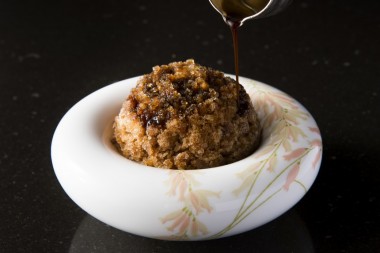
For desserts and sweet treats, visit Le Chocolat Alain Ducasse, the newly opened Roppongi location by the Parisian chocolatier. “The Roppongi location differs from our factory in Nihonbashi in that here there is an open kitchen in the salon area. Visitors can enjoy watching the chef prepare their desserts,” explains a representative. Le Chocolat Alain Ducasse launched its special 3-item summer dessert menu on June 15. For a refined, decadent interpretation of the classic Japanese summer treat kakigori that can be found only in Roppongi, try Le Chocolat’s Kakigori: Café Fort et Chocolat (¥1,600), a meticulously layered, texturally exciting take on shaved ice (the Nihonbashi location offers a matcha variation). The outermost layer of the dish uses coffee ice, giving gentle crunch for the first bite. Beneath that, find a layer of chocolate sorbet followed by a layer of refreshing orange marmalade. Next is finely crushed cacao nibs for texture leading to the core of the dish: a rich coffee cream. The finishing touch is a topping of coffee sauce. The summer menu also includes a special baked item: the Soufflé Pamplemousse et Praliné (¥1,600). Pamplemousse means grapefruit, the central flavor of the dish. Dig in to the fluffy soufflé to find gently crunchy hazelnut praline inside and a bright grapefruit marmalade at the base. Served alongside the soufflé is the same grapefruit marmalade topped with a hazelnut praline ice cream. “In summer, these citrusy flavors are refreshing, but grapefruit is something you don’t really see much. Surprisingly, it fits very nicely with our menu,” explains the representative. The location’s regular offerings remain available throughout the summer: the Millefeuille tout Choco (¥1,700) celebrates the difference in texture between pastry and cream; the Mousse au Chocolat (¥1,600) is composed of shaved cacao used as an edible, decorative topping to an airy, rich chocolate mousse.



